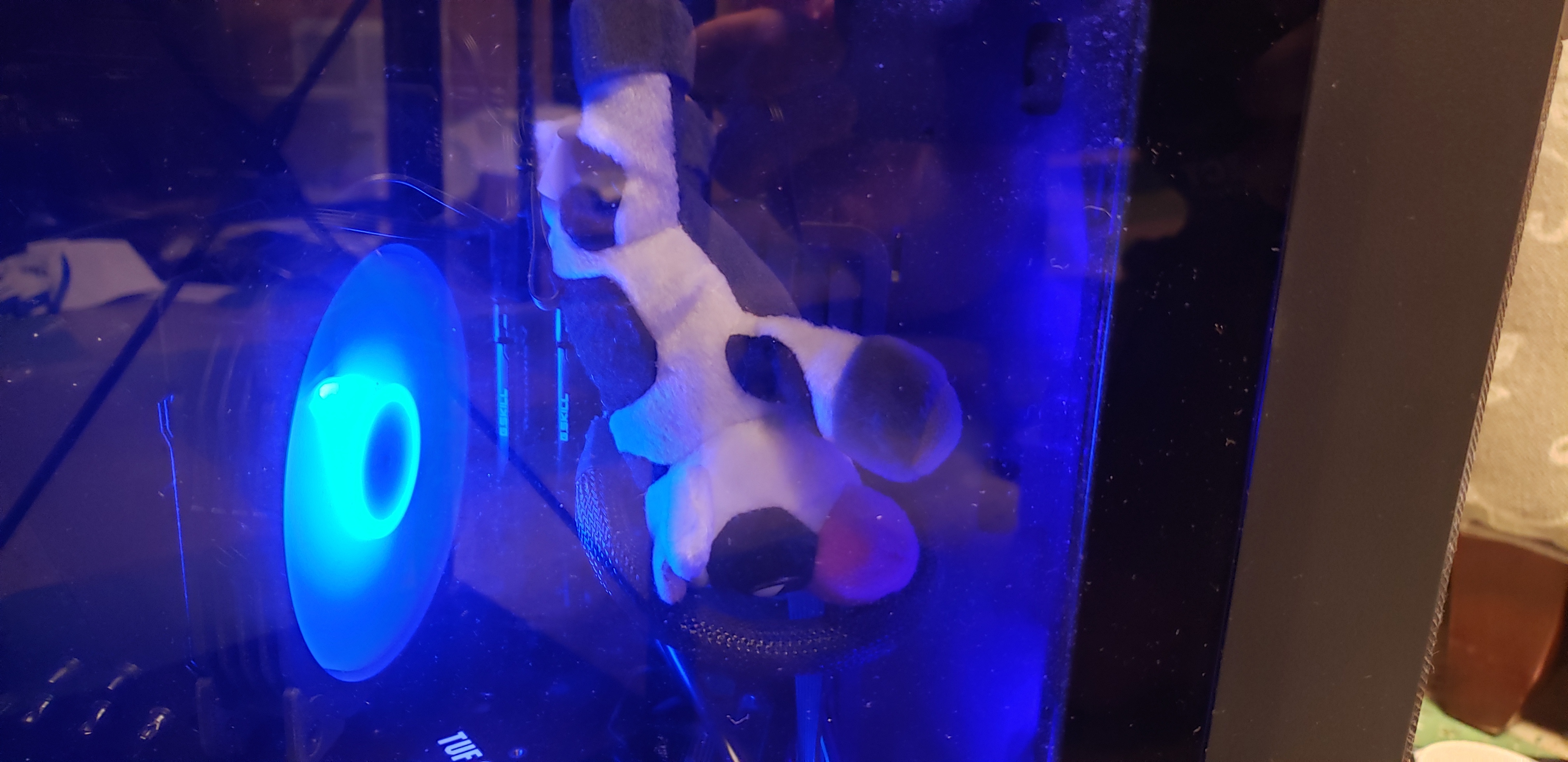I’m asking what big motivational factors contributed to you into going Linux full-time. I don’t count minor inconveniences like ‘oh, stutter lag in a game on windows’ because that really could be anything in any system. I’m talking, something Windows or Microsoft has done that was so big, that made you go “fuck this, I will go Linux” and so you did.
For me, I have a mountain of reasons by this point to go to Linux. It’s just piling. Recently, Windows freaked out because I changed audio devices from my USB headset from the on-board sound. It freaked out so bad, it forced me to restart because I wasn’t getting sound in my headset. I did the switch because I was streaming a movie with a friend over Discord through Screen Share and I had to switch to on-board audio for that to work.
I switched back and Windows threw a fit over it. It also throws a fit when I try right-clicking in the Windows Explorer panel on the left where all the devices and folders are listed for reasons I don’t even know to this day but it’s been a thing for a while now.
Anytime Windows throws a toddler-tantrum fit over the tiniest things, it just makes me think of going to Linux sometimes. But it’s not enough.
Windows is just thankful that currently, the only thing truly holding me back from converting is compatibility. I’m not talking with games, I’m not talking with some programs that are already supported between Windows and Linux. I’m just concerned about running everything I run on Windows and for it to run fully on a Linux distro, preferably Ubuntu.
Also I’d like to ask - what WILL it take for you to go to Linux full-time?
Windows 10 update. They nagged about it, and for security I relented. It did a few things: made our proprietary CAD slow (not just one machine or one company, but every customer running it complaining), made home machine slow for everything. Made my wife’s older laptop a useless brick. The UI was so slow it seemed frozen. So I searched what Linux Distro supported the Proprietary CAD. Which was SUSE and RHEL. Since OpenSUSE was close enough and free I installed it. CAD was back to normal W7 speed, and my wife’s laptop was faster than on W7. Currently I moved her laptop to NiXOS, it is snappy and runs apps & zoom calls as well as my newer Workstation
Two things:
- I have an old refurbished Thinkpad that I originally bought as a backup navigation computer for a month-long sailboat voyage. It had Windows originally and was “fine”, by which I mean slow but acceptable for navigation purposes. When I was forced to update to Windows 10, the performance was no longer tolerable, so I hardly used it for about four years. I also had a Windows gaming PC, so no big deal.
- About a year ago, I got a shiny new Windows gaming PC. I was trying to decide what to do with my old gaming PC, which had the same problem as my laptop: it could barely crawl under the weight of years of Windows OS “upgrades”. I got it into my head that I should build a media PC with it since Netflix kind of sucks now. That lead me down the self-hosting and Linux rabbit hole.
Before I knew it, I had my old gaming PC running Proxmox and attached to my main television, I bought an old Dell Poweredge server (also running Proxmox), an old Compellant storage shelf with 20 SAS drives, a Tripp-Lite UPS, and a 24-port network switch. I also discovered Docker. So, now I fucking love Linux and I’m a fiend for self-hosting and media streaming. And how do I centrally control all of this infrastructure? That’s right, my old Thinkpad got a new lease on life running Arch and I can run all of my server infrastructure using the terminal, emacs, and web interfaces. Fuck yeah.
And what happened to my beautiful, expensive new Alienware Windows gaming PC? After playing a couple hundred hours of Cyberpunk, it just sits there. Now I’m addicted to Dwarf Fortress on my old Arch Thinkpad and I don’t think about high-spec AAA games much.
I had no idea this would happen when I started this Linux journey. Life is strange.
It used to be just because I was interested. Then life got in between and I ditched it a bit, until Microsoft announced that “find anything you ever did”-feature. I installed Ubuntu again after quite a few years and stayed because I finally did not have to spend 3 days to get my video card working “kinda” and I found out my games actually work. No need to use Windows anymore.
I had used Linux almost exclusively between 1999 and around 2005 and then went back to Windows for games. Stayed there until recently and switched back to Linux because of the enshittification of Windows. I even had a pro license and hadn’t gotten everything pushed into my face but it was still too annoying what Microsoft did.
While not everything is working smoothly yet (especially Wayland and sound), it feels a lot smoother and is so much more fun. I was especially surprised how great the games work. If I had know that I would probably have switched back to Linux sooner.
VMs are what really did it for me. I was working at a health care job doing IT. Whenever someone wanted a new server I’d have to buy the hardware install the hardware load Windows server on it load the middleware on it, connect it to the SAN, add it to the complicated backup schedule. Literally anything anyone wanted took me a month.
I threw an ESXi box in connected it to the SAN once, worked out a mirroring backup solution. Now I could slice up one decent size box into dozens of smaller boxes. My real limitation was Windows licensing. Server and CALs and middleware gets pricey quickly. But I can install as much community-based open source as I want.
I started running Linux of the desktop to keep up with technology. Before long the vast majority of my servers were Linux.
Ads. Specifically, a popup served by the OS about chrome and switching to bing or edge or something like that. I didn’t even use chrome, just having it installed was enough for them. Any ads baked into the OS is unacceptable, but that’s just so far over the line that I find it insane anyone still uses Windows at all.
I contacted support to complain and their “solution” was to reinstall the OS, so I installed a better one instead.
Software dev was nicer & easier + digital art tools being more than servicable (where Adobe had just moved to a subscription service in 2013) while the philosophy matches my own for privacy & freed. I don’t like compromising on that philosophy unless absolutely necessary or being cost-prohibitve (where convenience is a low priority). In 2016 after seeing the Nvidia 10 series GPU numbers (still primary GPU ha), I built a new PC & vowed that this wouldn’t be a dual-boot machine, & the rest was history.
Something in windows was causing it to be impossible to run docker containers with ease without needing to mess with some virtualization setting in some deep hidden windows settings paanel
When I switched it didn’t even have anything to do with the enshittification of Windows. I just thought it would be cool to try another OS. Pop_OS was really nice to use and this just so happened to be right around the time Proton was getting really good. I think the only game I was playing that didn’t work was Siege, and I ended up preferring using Linux to playing it.
I’ve been on Mac for around 10 years and the price of the hardware was a huge motivator. The 13" Framework came out and I jumped on that modular bandwagon. I do still use my Mac as a video ripping station but otherwise I earn all my money as a dev on Fedora 40 and have a secondary tablet with NixOS on it, because the draw of an easily reproducible system is strong.
Now Apple just continues to do stupid shit and I just want to own my computer without them looking over my shoulder and charging me a huge price to do it.
I do need to upgrade the Framework (started with the cheap i5 chip) to the fastest AMD variant available so that streaming works better without the fan spinning up, or just build a desktop for streaming and video work.
For me it’s the ability to use my hardware as long as I want after a tech company’s EOL. When I was on Windows 7 and it reached EOL my machine was unusable. Couldn’t go back because I waited to long. Then I updated my machine and Windows 10’s EOL was set and again, machine will be not be safe to use. I switched to Linux before that release date but the way Microsoft does with these EOL dates, for me isn’t sustainable. I dont need to buy a new machine every few years. I want my machines to be a usable and secure for as long as I want it to with minimal impact to my finances and stop simply just throwing old machines away. And if I run into a distro that my machine isn’t beefy enough for, I have distro-hopped around enough to be able to go to something else but still be in the Linux-verse.
The stuff like, better for privacy, open source etc., those benefits came after.
Wobbly windows, rotating cube workspace switcher, and a flaming bonanza animation when a windows was closed.
The year was ~2003
Compiz fusion! I spent so long trying out different effects for different actions. I smoked a lot of reefer in those days.
I still do, but I used to, too.
Good times… Good times.
My internship supervisor. I did an internship back in 2006, I had this supervisor that was very very pro open source. He asked anyone on the team to use a Linux distro for work. I used Ubuntu for work for a long time. Slowly I started liking my personal laptop with windows less and less. So at some point (I think 2010 or 2011) I just went to Linux for my laptop as well. At first a dual boot, but I booted in Windows less and less. So on my next laptop some years later I skipped windows entirely.
I don’t miss windows at all, but I do really hate I have to work with teams. It’s the only app on my laptop I really hate on Linux.
I’m a non IT user interested in usability. I left Windows 7, on my home PC, over 10 years ago, as Linux has a good selection of Desktop Environments to choose from. So I get to try different ways of working. Windows has loads of tweaks. But no serious alternative desktops. Work PC is Windows only sadly.
I wanted to learn programming and I heard Linux was nice. I remember setting up Java on Linux was pain (2012) and I decided to try Linux and see what happens.
I decided to go for a learning experience and installed Arch, I got through the installation and was shown KDE and I was amazed until something weird broke. The utter bliss of customising the UI to my liking was so good.
I then tried Ubuntu, it worked but I was disappointed it wasn’t KDE but I liked the part where all the guides online were basically geared towards Ubuntu/Debian setups.
So I checked out KDEs website and I saw KDE Neon and thought “That’s the one for me. Based on Ubuntu with latest KDE.” not wrong, but not right either. I entered KDE Neon when it was still a dev distro without knowing. Stuff broke every now and then but nothing major. KDE Neon since v6 has been amazing. I’ve had a couple of Wayland crashes but the bloody thing restores everything in the exact same place, same activity, virtual desktop, size and all and it has only happened once since v6.
KDE just keeps getting better.
I also jumped from Gnome to KDE over the years. I’m not a fan of how Gnome went with the convergence, large-padding, touch trend. I love how KDE has tighter spacing and follows a traditional desktop metaphor while still being customizable. Gnome 2 did okay at this, but when gnome 3 hit, I ran to Mint/Cinnamon for a bit before trying a bunch of KDE distros.
KDE is so humble. Their k-apps are much more numerous than I realized and the DE is great on Kubuntu, Neon, Arch, MX, etc.
Having said that, I hold a lot of love for the gnome team too, I just don’t jive with the design philosophy anymore.





